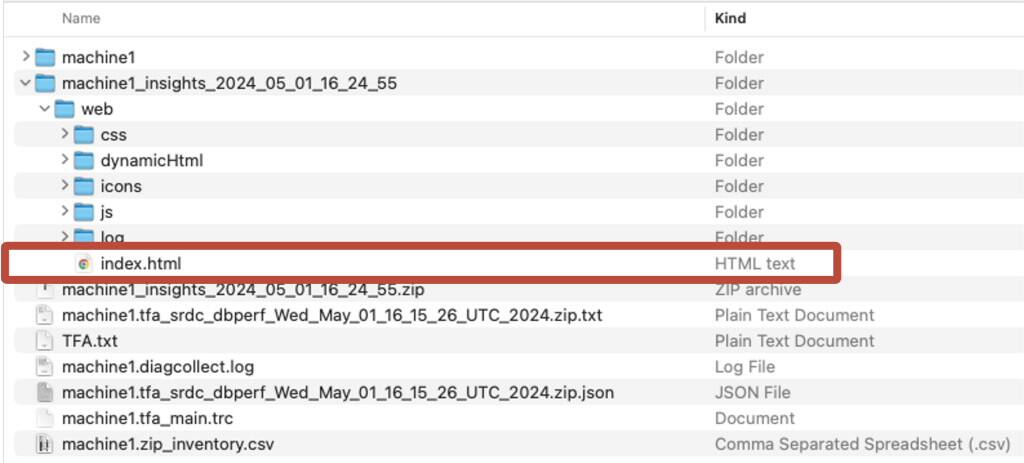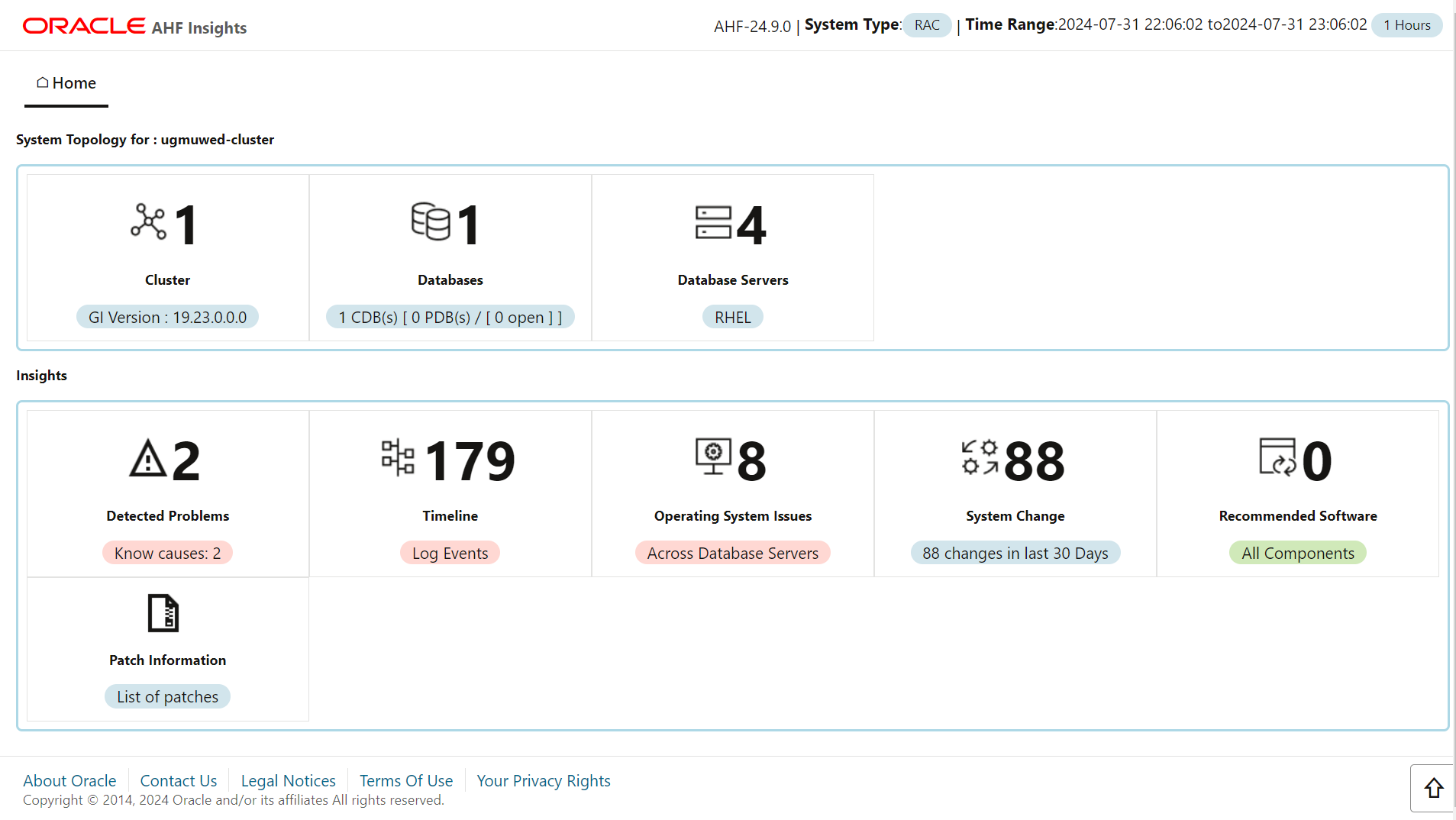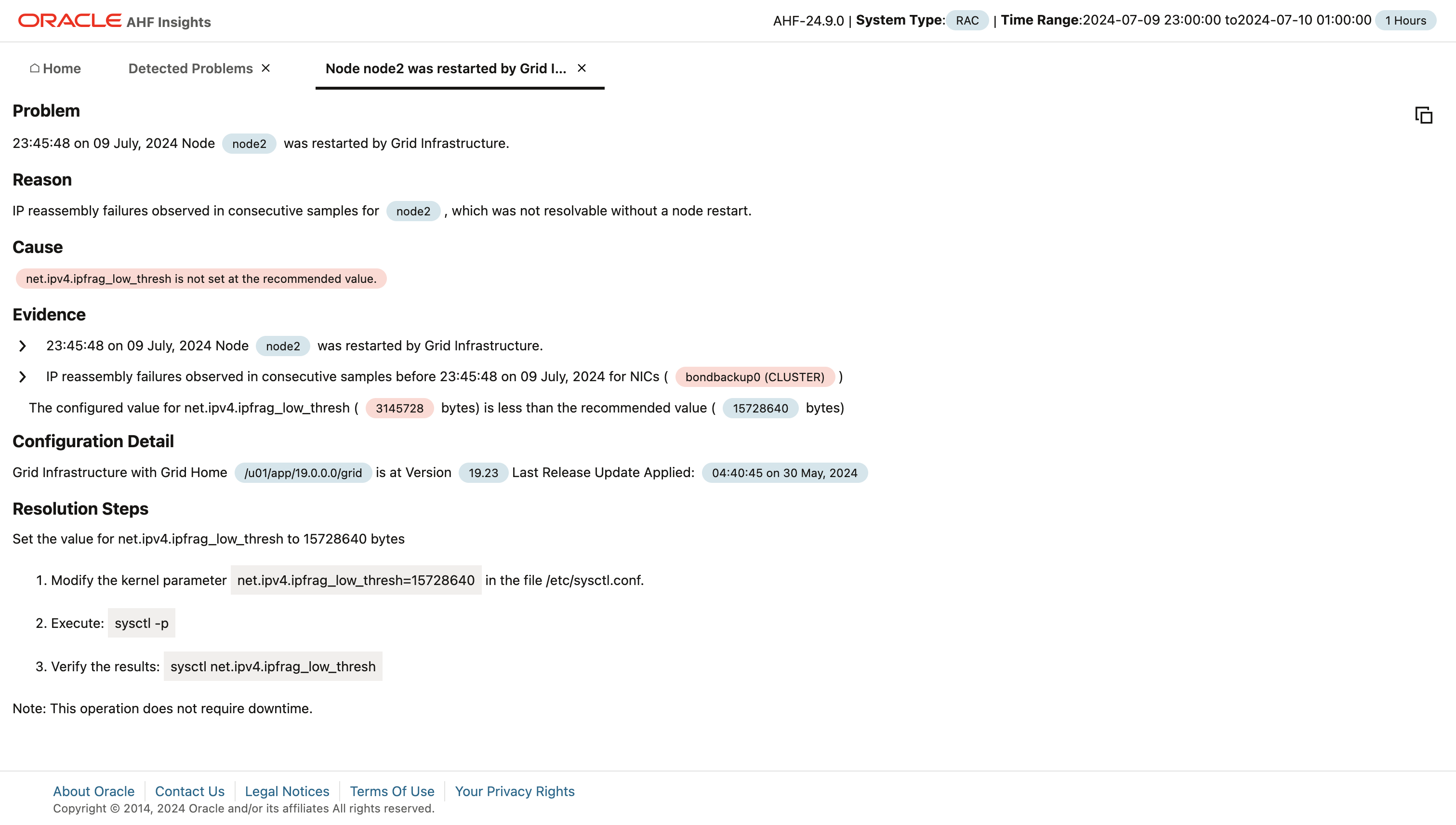7.1 Resolve Problems AHF has Detected
- Log into the machine where the issue was seen and as the
Oracleuser run the following commands to obtain the diagnostic collection.tfactl diagcollectAutonomous Health Framework will prompt you and then guide you through a series of questions and answers so it can collect all the necessary diagnostics.
- Transfer the diagnostic zip from the machine where you initiated the collection to a machine with a web browser and unzip it.
- Within here you’ll find another zip containing Autonomous Health Framework Insights. Extract that and open the
index.html.Figure 7-1 AHF Insights

Figure 7-2 AHF Insights

Figure 7-3 Detected Problems

- Click Detected Problems.
The Detected Problems page displays the list of problems detected.
Figure 7-4 Detected Problems

Note:
Detected Problems section is created only when AHF Insights detects problems. - Click Show to view the details.
Figure 7-5 Detected Problems Details
 The Problem Summary contains:
The Problem Summary contains:- Problem: Describes what happened.
- Reason: Explains why it happened.
- Cause: Identifies the root cause.
- Evidence: Provides proof to support why this is the cause. Evidence sections are expandable to show the underlying data.
- Resolution Steps: Explains the exact steps to resolve the problem in simple terms.
| Problems | Causes |
|---|---|
|
|
Parent topic: Resolve Database Issues